Study on Asymmetry Concentration of Mixed Oil in Products Pipeline
Abstract
1. Introduction
2. Asymmetric Distribution Model of Mixed Oil
2.1. Flow-Control Equation
2.2. Model with Polar Adsorption Layer
2.3. Model Considering Temperature Change
3. Numerical Solution Method of Mixed Oil Model
3.1. Computational Domain
3.2. Governing Equation Discretization
3.2.1. Convection Equation Discretization
3.2.2. Diffusion Equation Discretization
3.2.3. Boundary Condition Dispersion
3.2.4. Proposal and Calculation Method of Deviation Volume
4. Results and Discussion
4.1. Basic Data
4.2. Model Validation
4.2.1. Grid Independence Test
4.2.2. Experimental Verification
4.2.3. Empirical Formula Verification
4.3. Analysis of Concentration Field Distribution Characteristics
4.3.1. Comparison of One-Dimensional Model and Two-Dimensional Model
4.3.2. Comparison of the Effects of Convection and Diffusion on the Mass Transfer Process
4.3.3. The Impact of the Viscous Sublayer
4.4. Numerical Analysis of Influencing Factors of Asymmetry Distribution
5. Conclusions
Supplementary Materials
Author Contributions
Funding
Conflicts of Interest
References
- Liu, K.; Li, Y. Optimal treatment of mixed oil in product oil pipeline. Chem. Eng. Equip. 2019, 12, 112–114. [Google Scholar] [CrossRef]
- Shao, T. Study on scheduling optimization of batch sequential transportation of refined oil pipeline. Petrochem. Technol. 2018, 25, 235. [Google Scholar]
- Shadloo, M.S.; Rahmat, A.; Karimipour, A.; Wongwises, S. Estimation of pressure drop of two-phase fluid in horizontal pipes using artificial neural networks. J. Energy Resour. Technol. 2020, 142, 112110. [Google Scholar] [CrossRef]
- He, G.; Tang, D.; Wang, J.; Liang, Y. Prediction of mixed oil tailings based on gamma-chi-2 distribution. Oil Gas Storage Transp. 2019, 38, 58–65. [Google Scholar]
- Yang, X. Oil Pipeline Design and Management; China University of Petroleum Press: Dongying, China, 2006; pp. 270–286. [Google Scholar]
- Mostafaei, H.; Castro, P.M.; Relvas, S.; Harjunkoski, I. A holistic MILP model for scheduling and inventory management of a multiproduct oil distribution system. Omega-Int. J. Manag. Sci. 2019, 98, 102110. [Google Scholar] [CrossRef]
- Zhang, H.; Liang, Y.; Laio, Q.; Ma, J.; Yan, X. An MILP approach for detailed scheduling of oil depots along a multi-product pipeline. Pet. Sci. 2017, 14, 434–458. [Google Scholar] [CrossRef]
- Yu, T.; Yu, Y.; Wei, L. Interface detection of refined oil pipeline and control of oil mixture. Nat. Gas Pet. 2013, 5, 5–8. [Google Scholar]
- Guo, Y. A new method to improve the tracking accuracy of mixed oil interface of product oil pipeline. Oil Gas Storage Transp. 2010, 29, 908–909. [Google Scholar]
- Lu, J. Eigenline method and differential method for convection-dominant diffusion problems. Comput. Phys. 1989, 4, 486–494. [Google Scholar]
- Deng, S.; Pu, J. Comparison of two-dimensional and one-dimensional mixed oil models for sequential transportation of refined oil products. Oil Gas Storage Transp. 1997, 1, 16–18. [Google Scholar]
- Zheng, J.; Jiang, M. Optimization solution of two-dimensional model for sequential delivery of product oil pipeline. Mech. Pract. 2014, 36, 574–579. [Google Scholar]
- Ma, G.; Bai, R. Theoretical numerical Analysis of two-dimensional Oil Mixture in Product Oil Pipeline. Oil Gas Field Ground Eng. 2018, 37, 47–52. [Google Scholar]
- Wang, J. Oil mixing problem in sequential Transmission of Shicai Pipeline. Oil Gas Field Ground Eng. 2017, 36, 41–44, 52. [Google Scholar]
- Zhao, H. Study on Sequential Conveying Characteristics of Refined Oil Pipeline. Master’s Thesis, China University of Petroleum (East China), Dongying, China, 2008. [Google Scholar]
- Zhang, Q.; Wang, H.; Lu, Y. Concentration of mixed oil in phoenics numerical simulation pipeline. Nat. Gas Pet. 2007, 3, 28–31. [Google Scholar]
- Wang, Z.; Wang, Y. Numerical study on the mixed oil download process of product oil in T pipe. J. Liaoning Univ. Pet. Chem. Technol. 2018, 38, 50–53. [Google Scholar]
- Dai, K.; Wu, M.; Wang, J.; Yang, L.; Wang, L.; Gao, Y.B.; Du, Y.P.; Zhang, C.J.; Yao, Y. Numerical simulation of the law of sequential oil transfer. Contemp. Chem. Ind. 2012, 41, 1259–1262. [Google Scholar]
- He, X.; Zhang, Y.; Yang, J.; Wu, L.J. Numerical simulation of mixed oil sequential transportation of refined oil at different inclines. Nat. Gas Pet. 2016, 34, 16–21. [Google Scholar]
- Xia, Z.; Liu, Q. Two-dimensional numerical analysis of sequential oil transfer mixing process. Mech. Pract. 2010, 6, 13–17. [Google Scholar]
- Fowler, F.C.; Brown, G.G. Contamination by successive flow in pipe lines. Trans. Am. Inst. Chem. Eng. 1943, 39, 491–516. [Google Scholar]
- Hara, A.; Hayashi, H.; Tsuchiya, M. Sphere separation system aids long-haul oil-product transport. Oil Gas J. 1979, 77, 47–51. [Google Scholar]
- Yong, Q.; Jiang, S.; He, D.; Liu, Z.; Jiang, Y. Calculation of temperature compensation for conversion of mixed oil concentration in sequential transportation. Oil Gas Storage Transp. 2007, 26, 20–22. [Google Scholar]
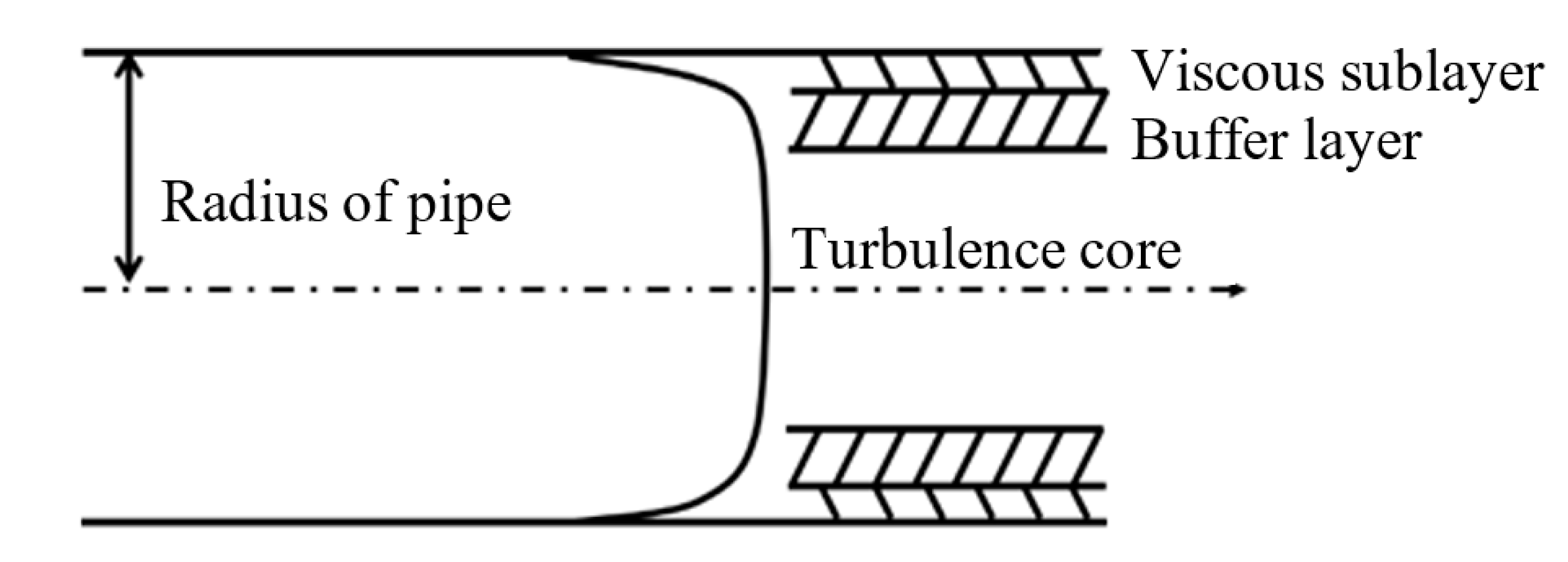
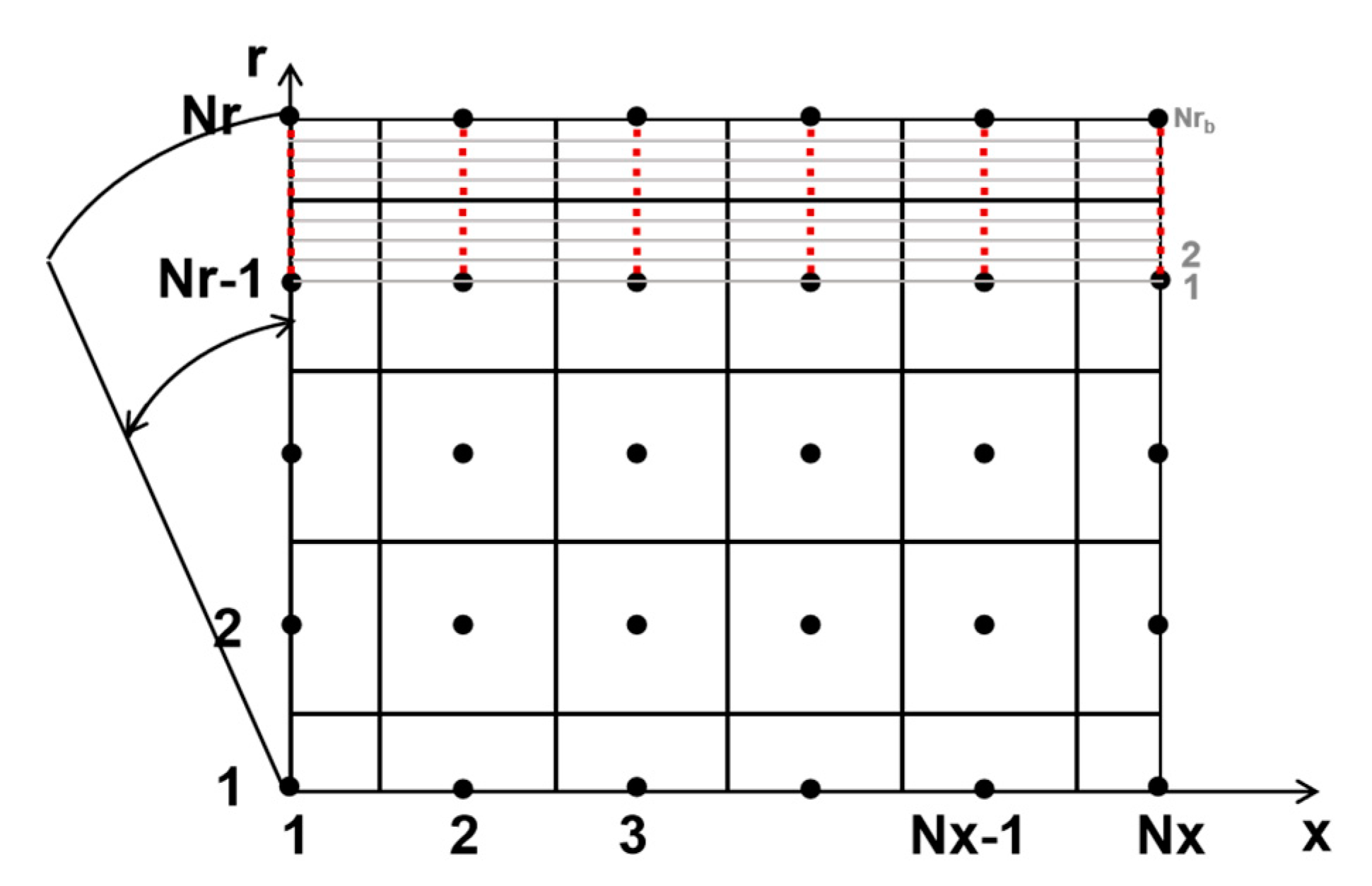
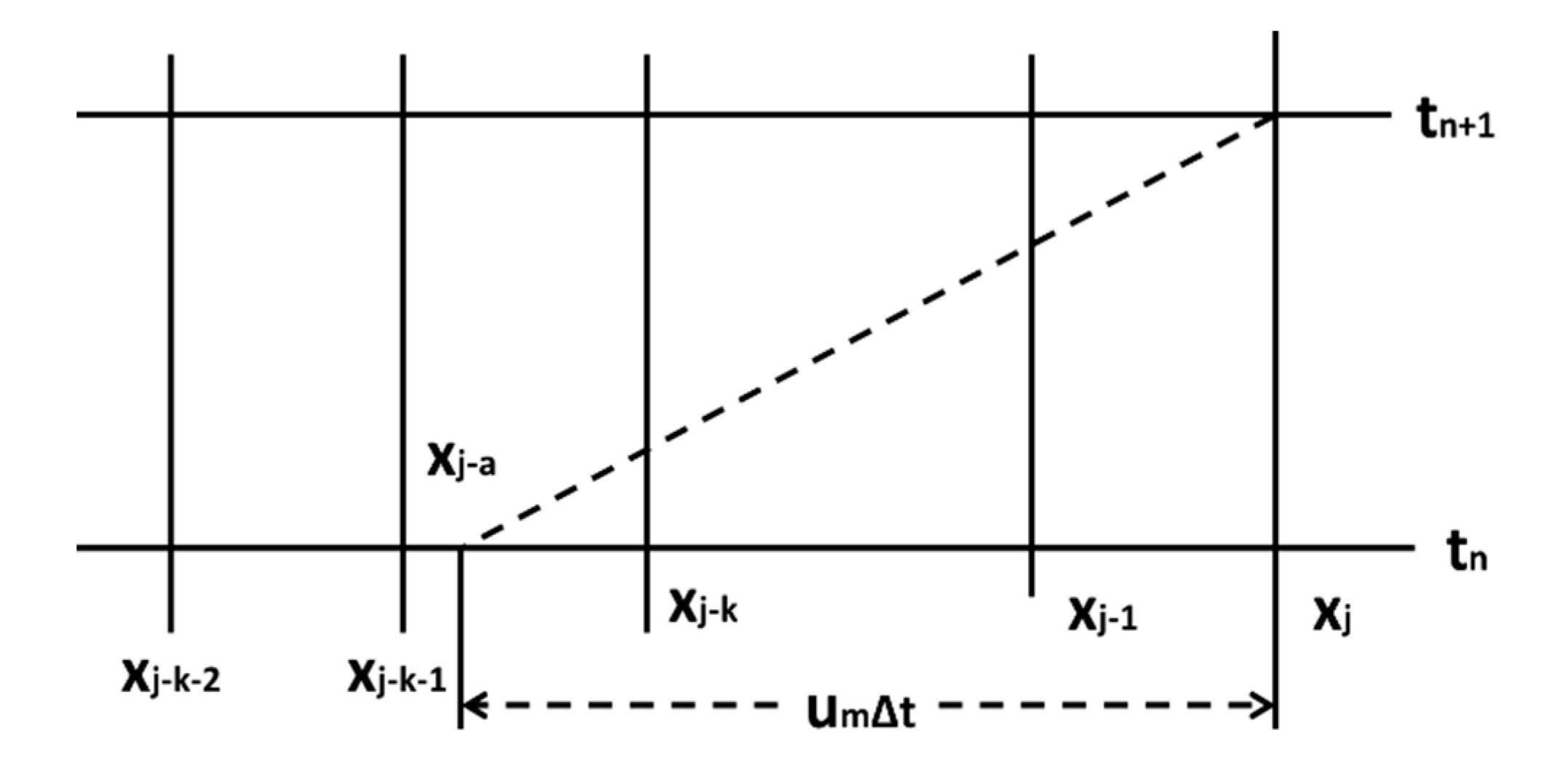
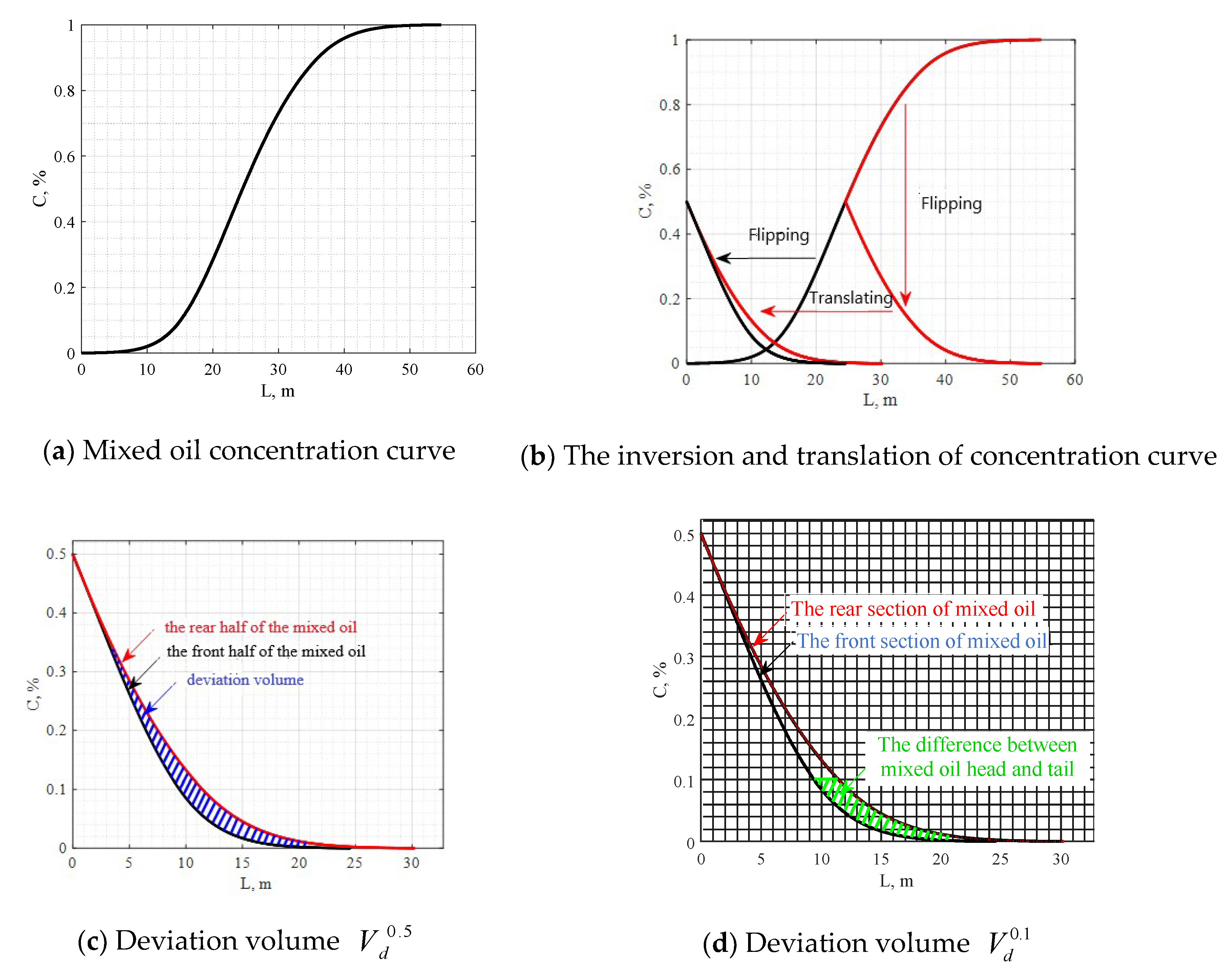
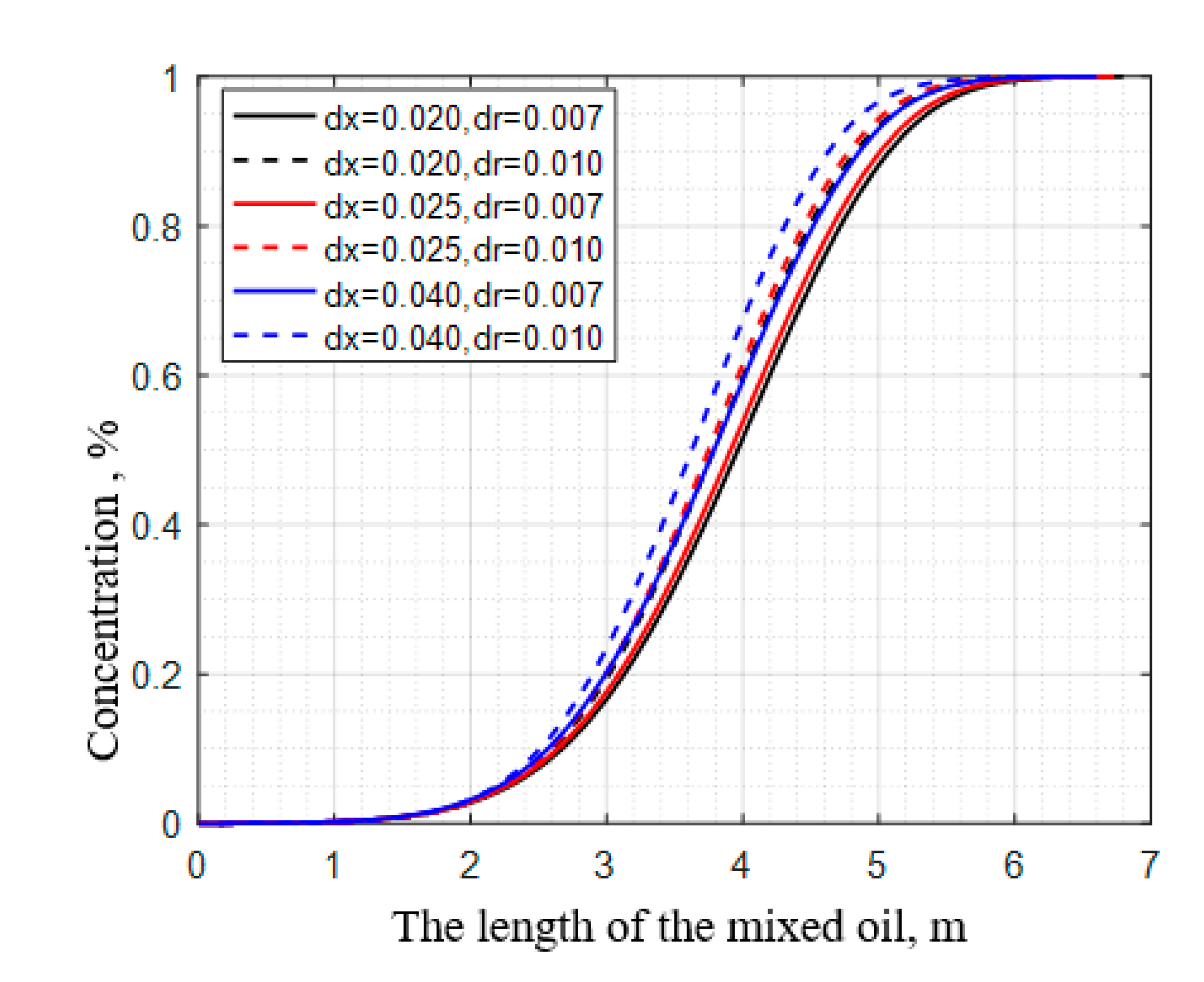
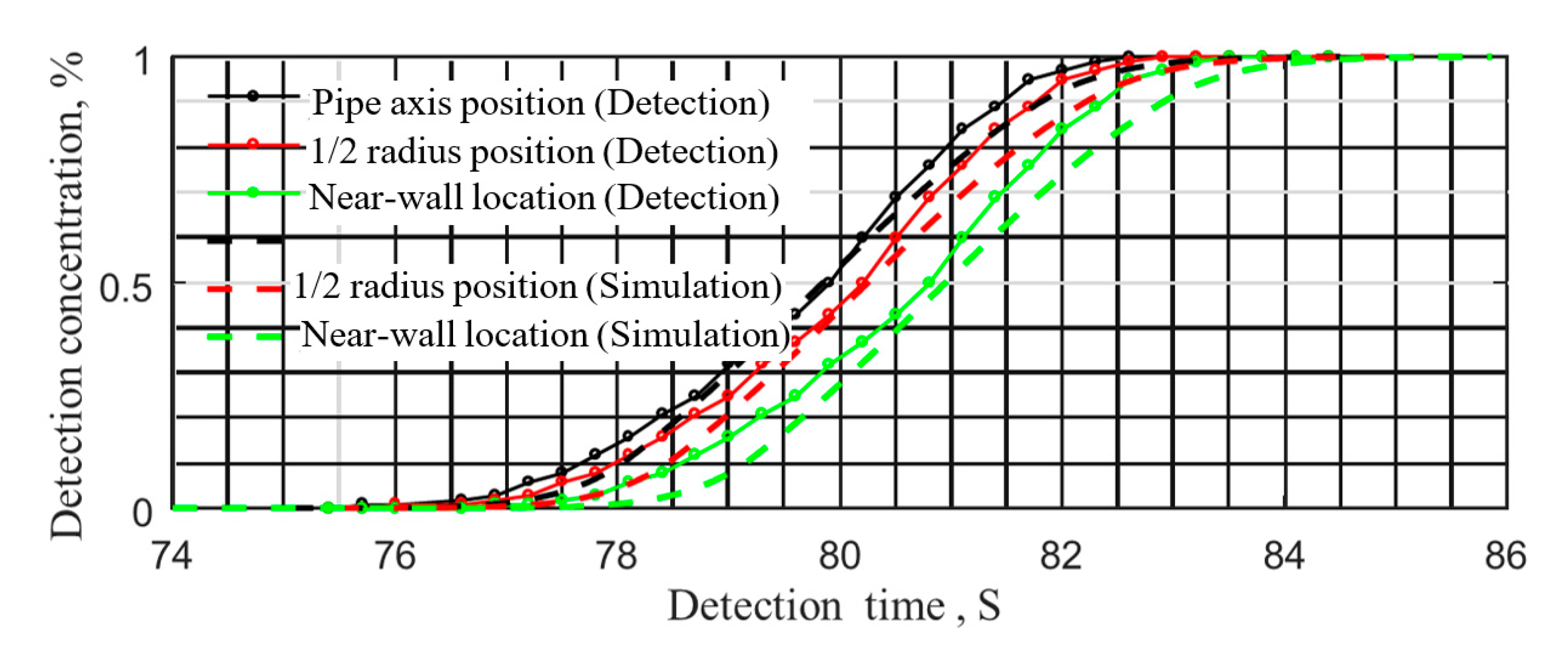
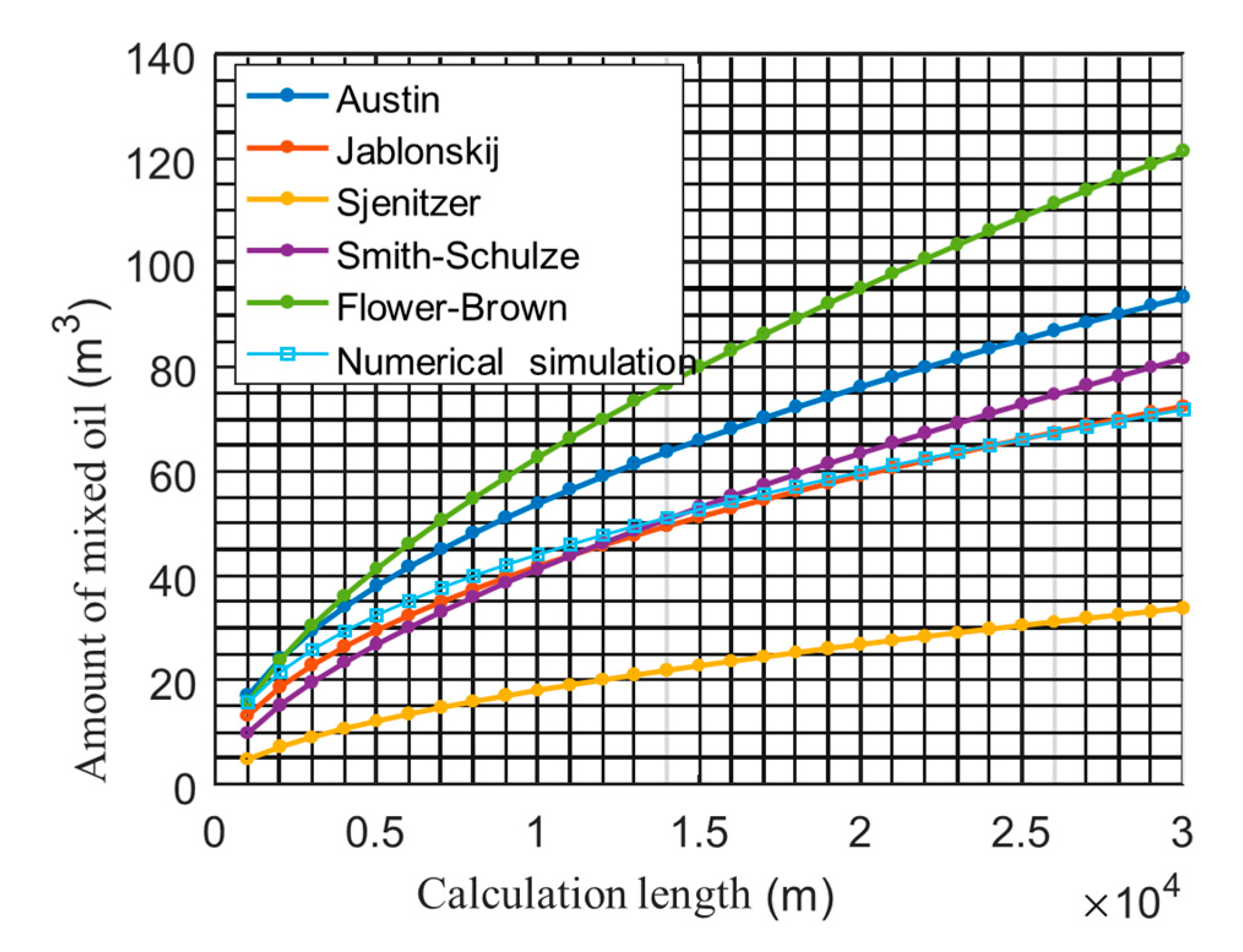
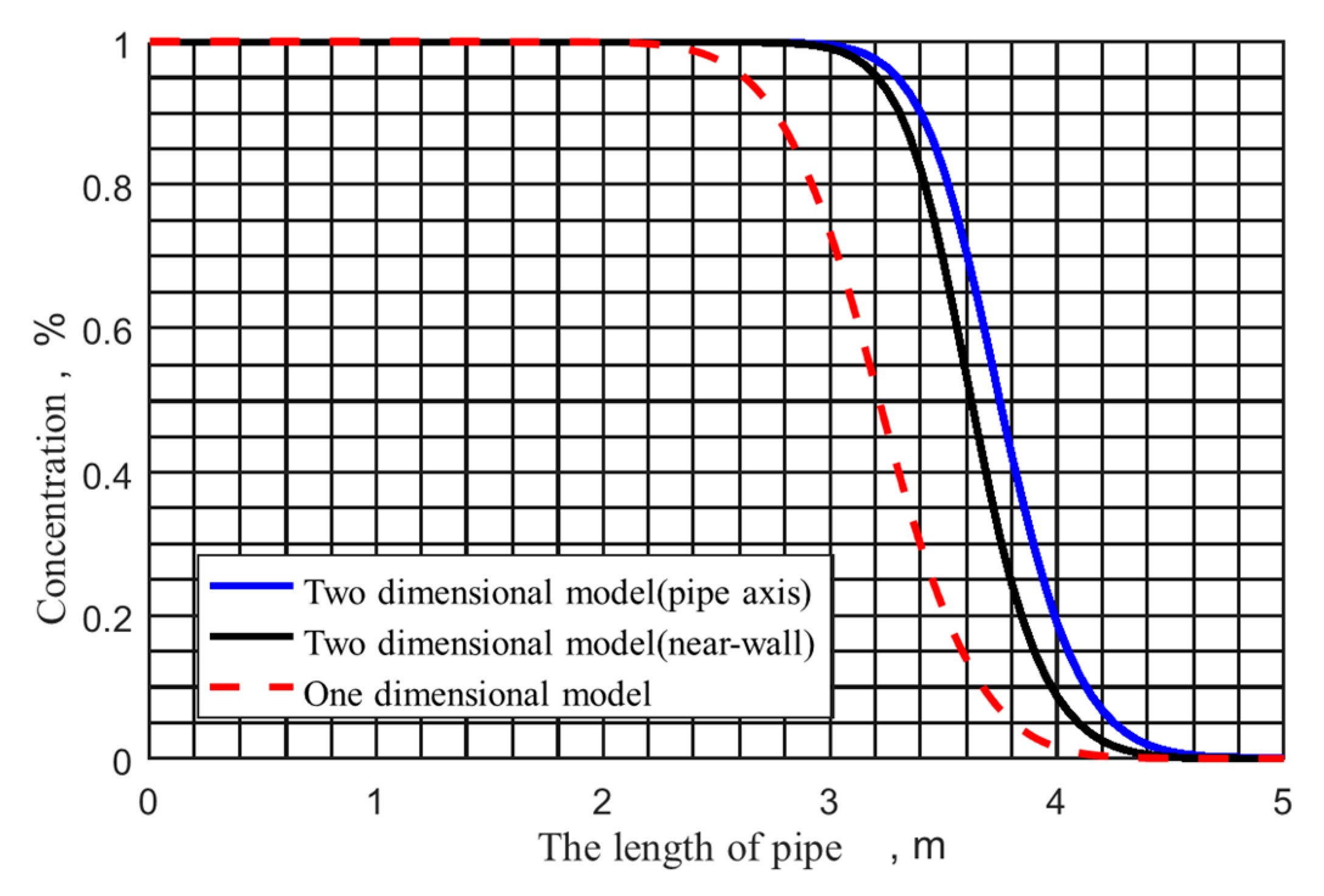
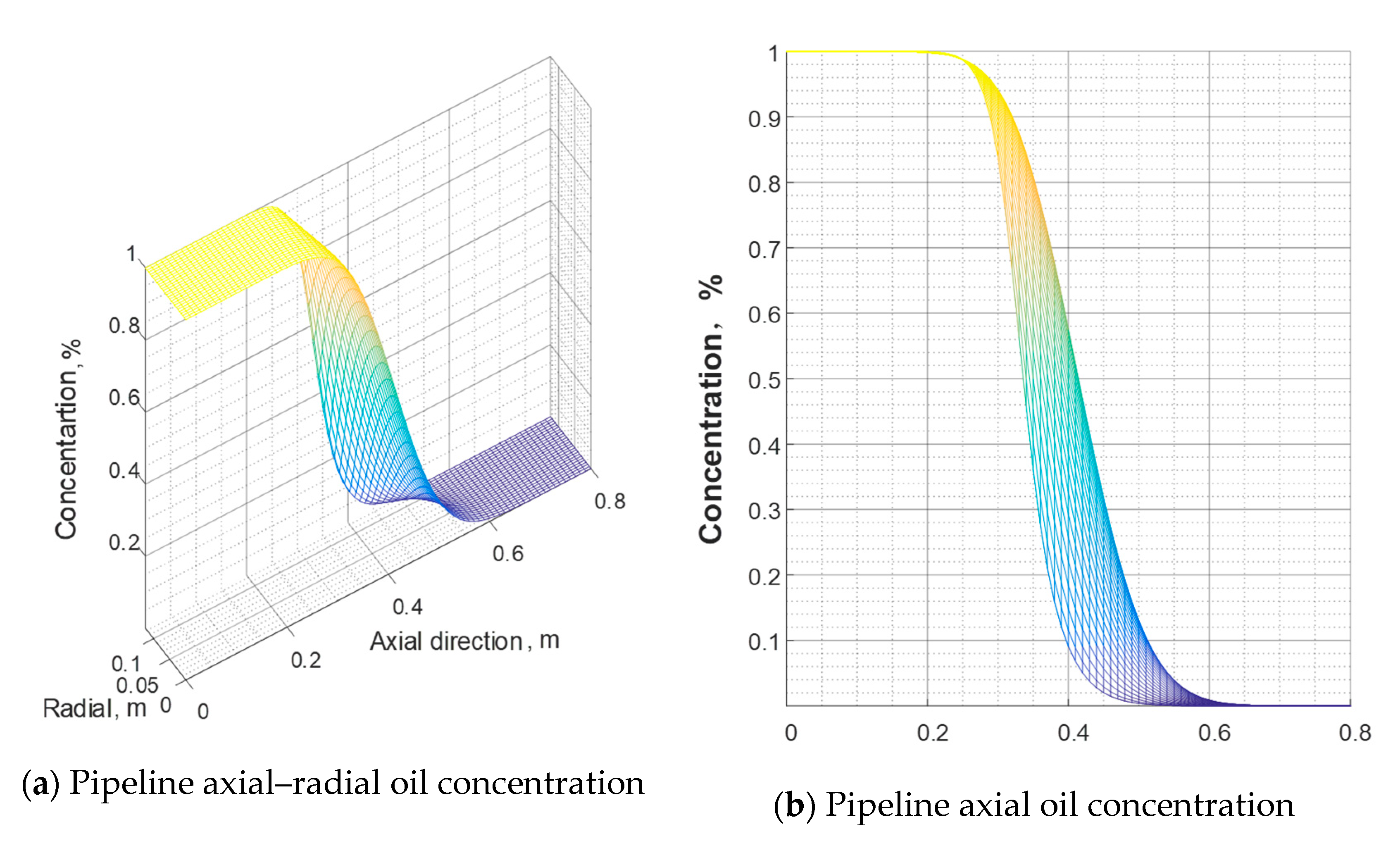
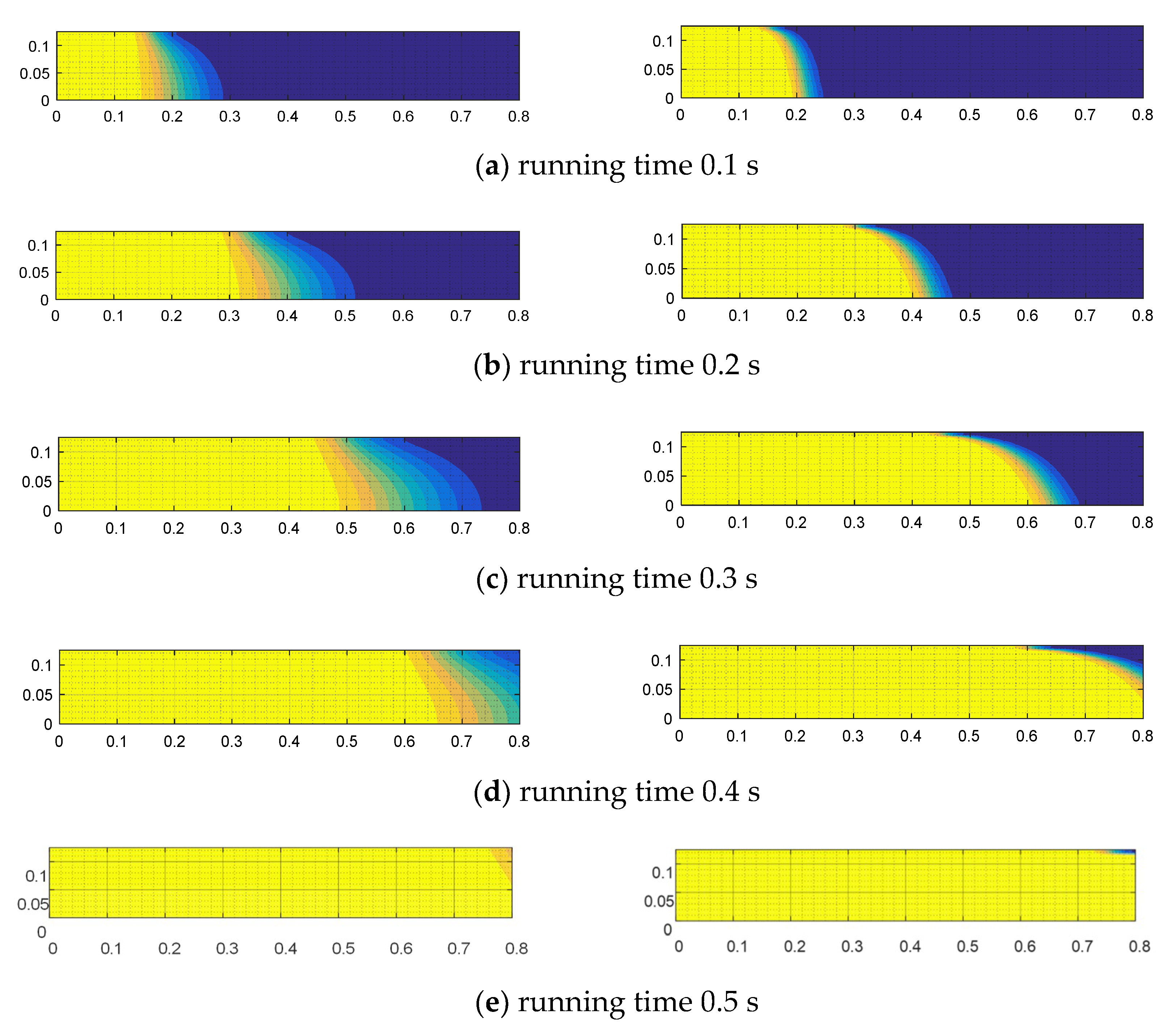
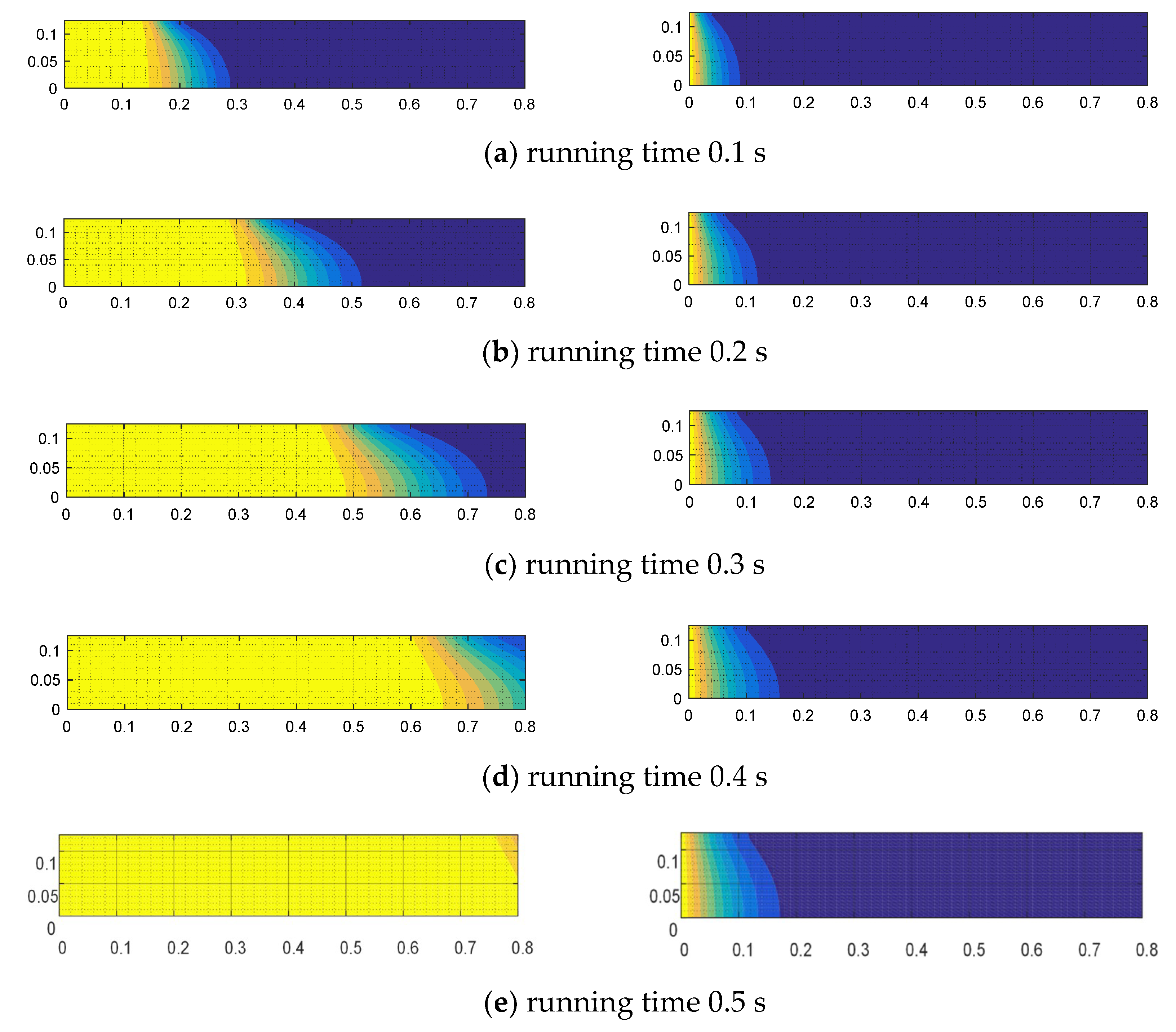
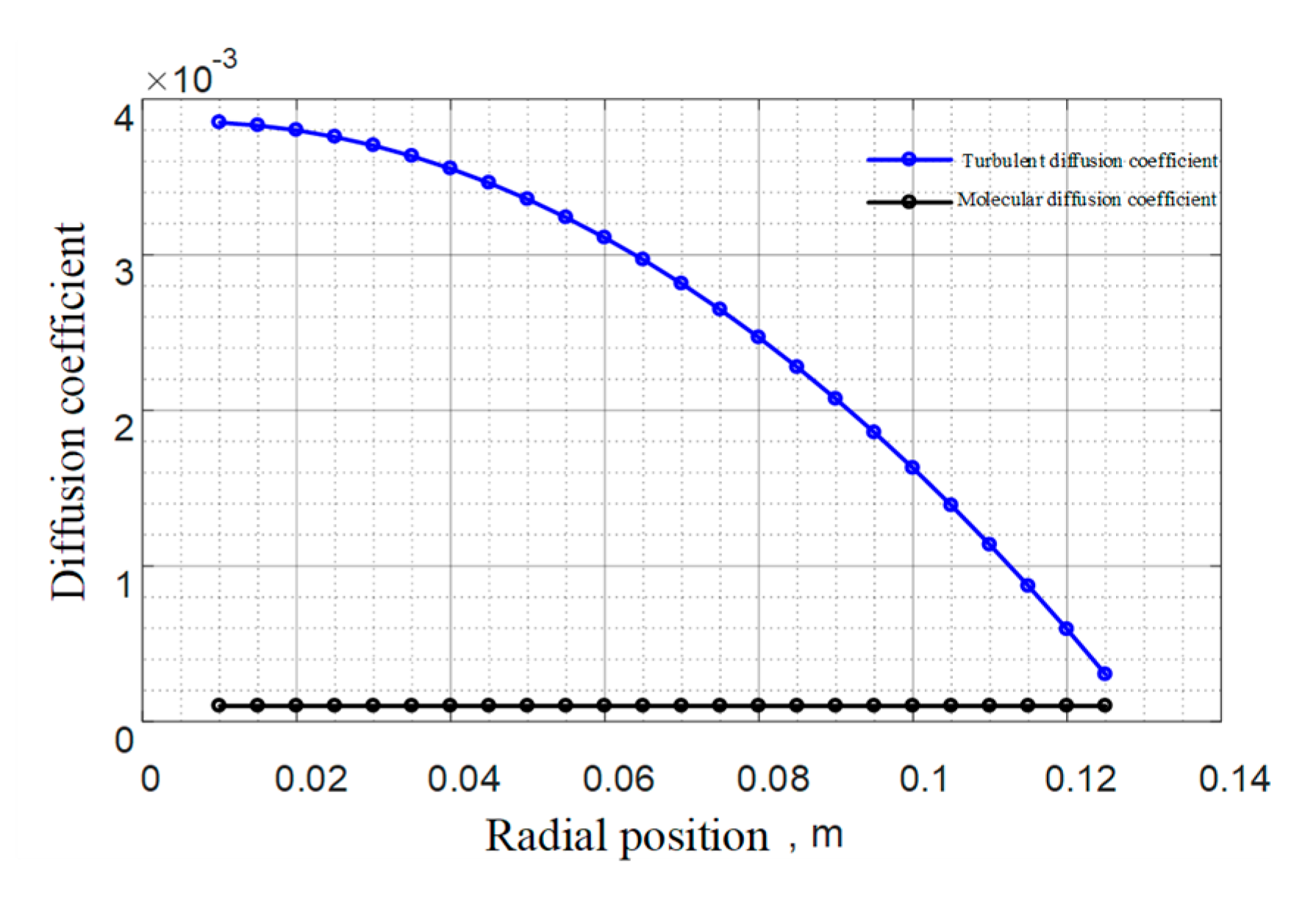
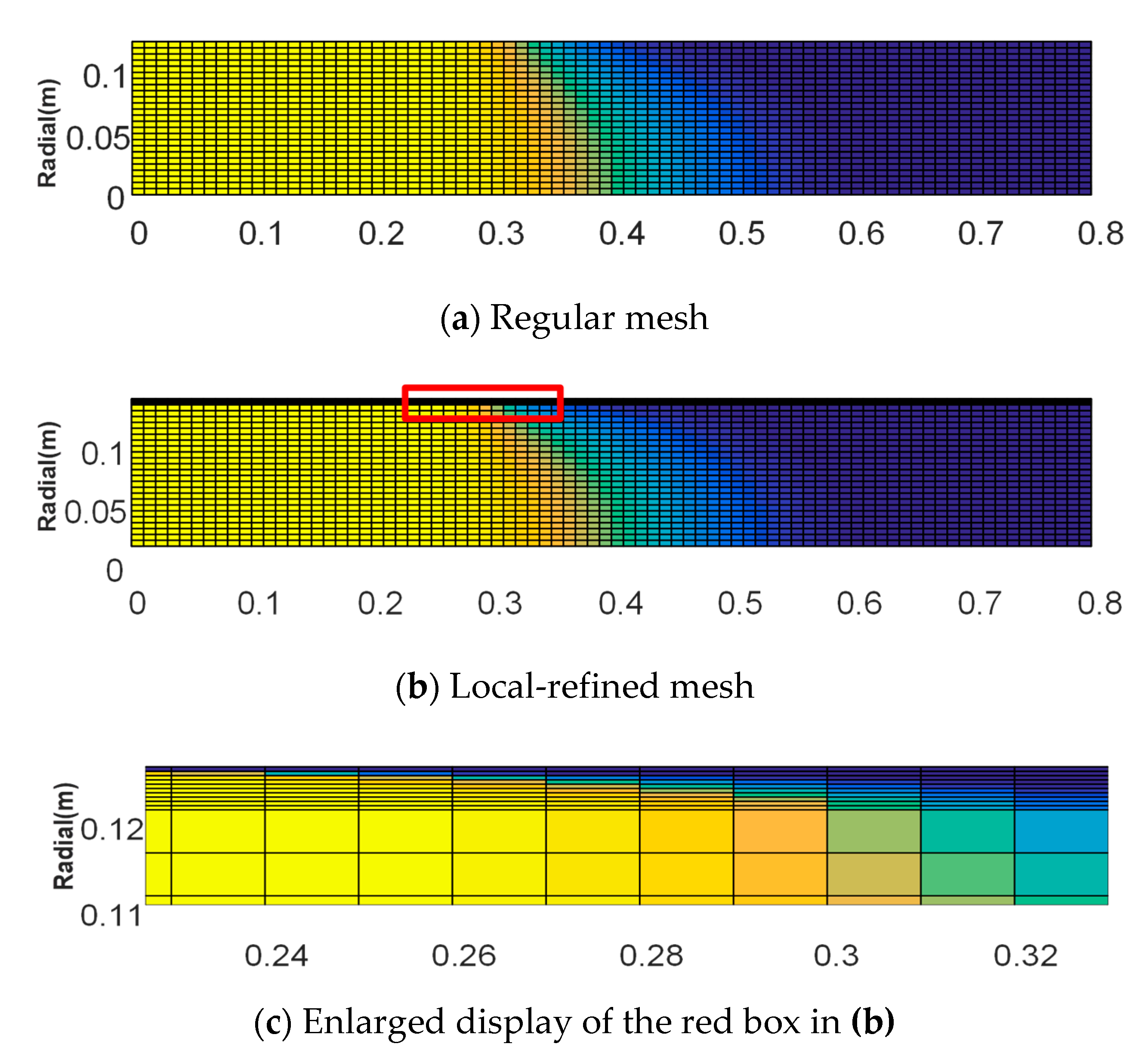
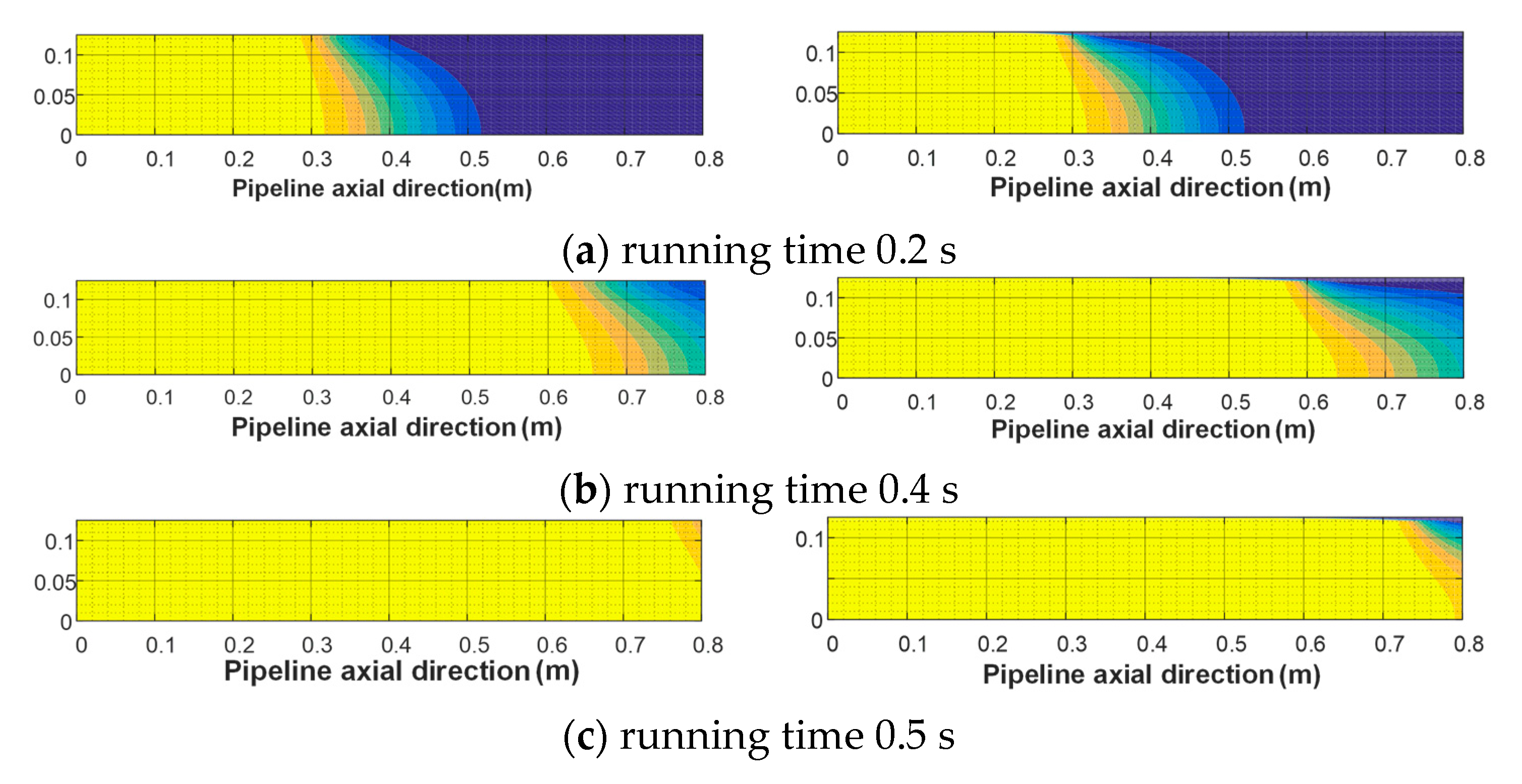
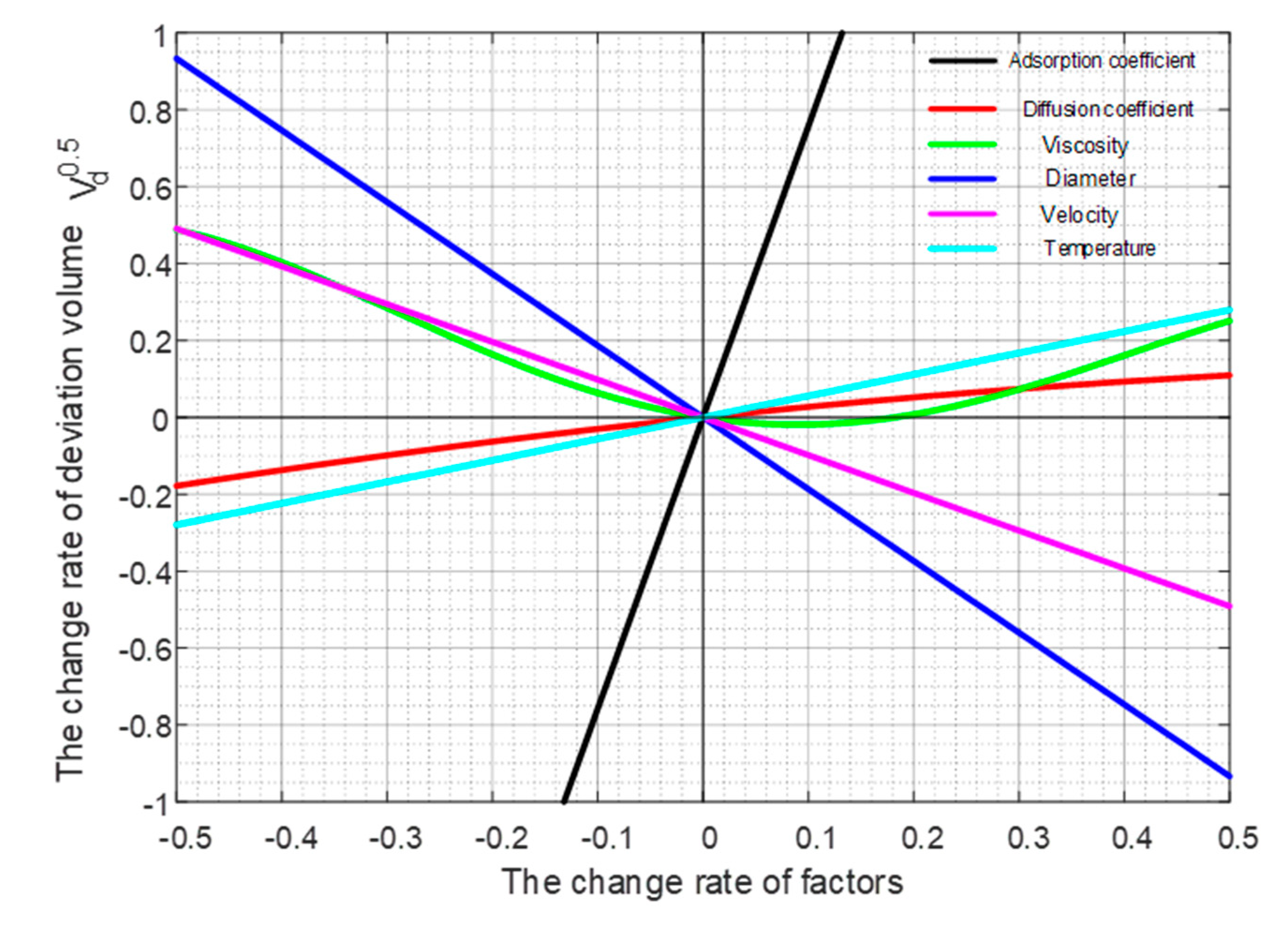
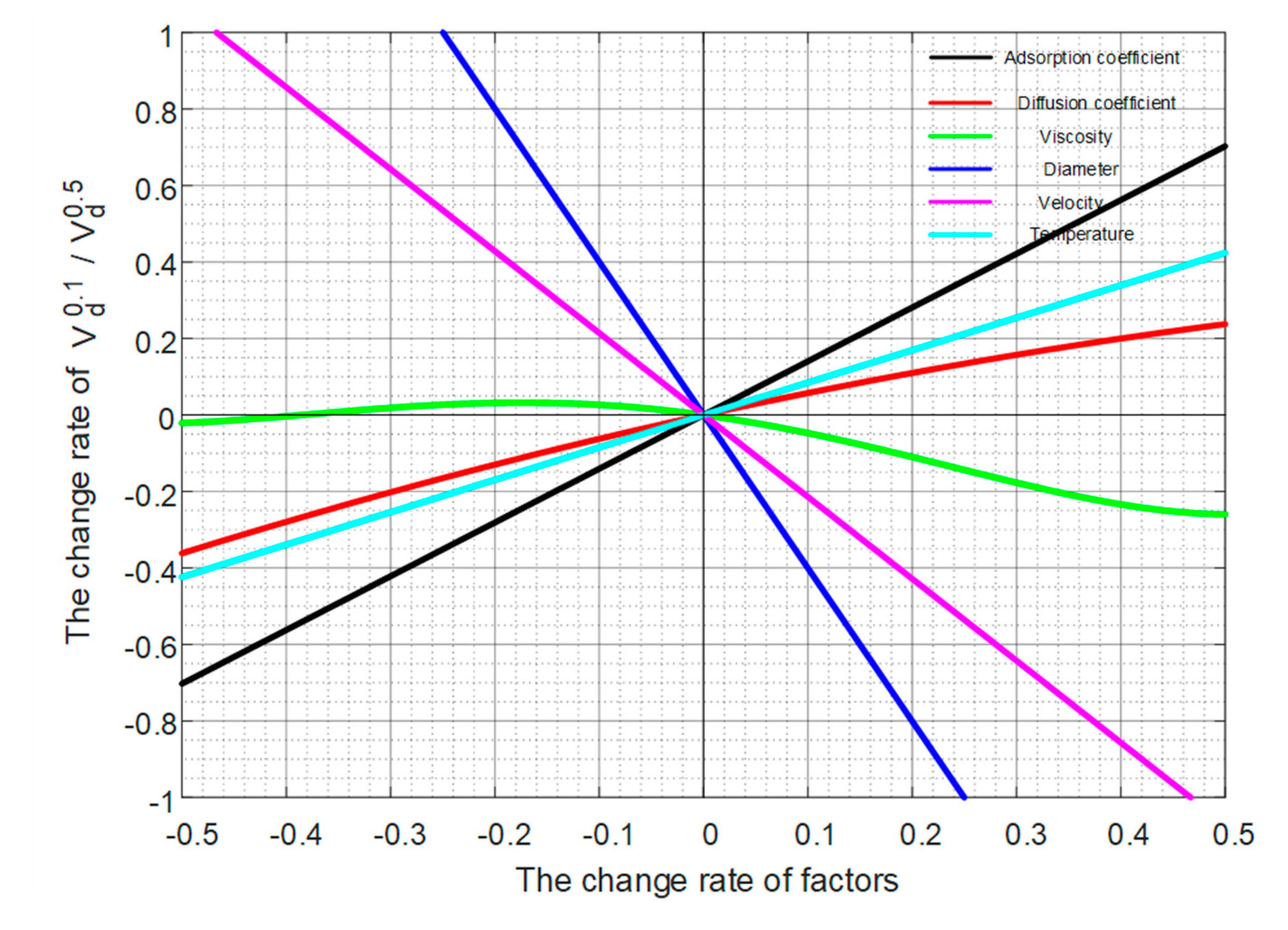
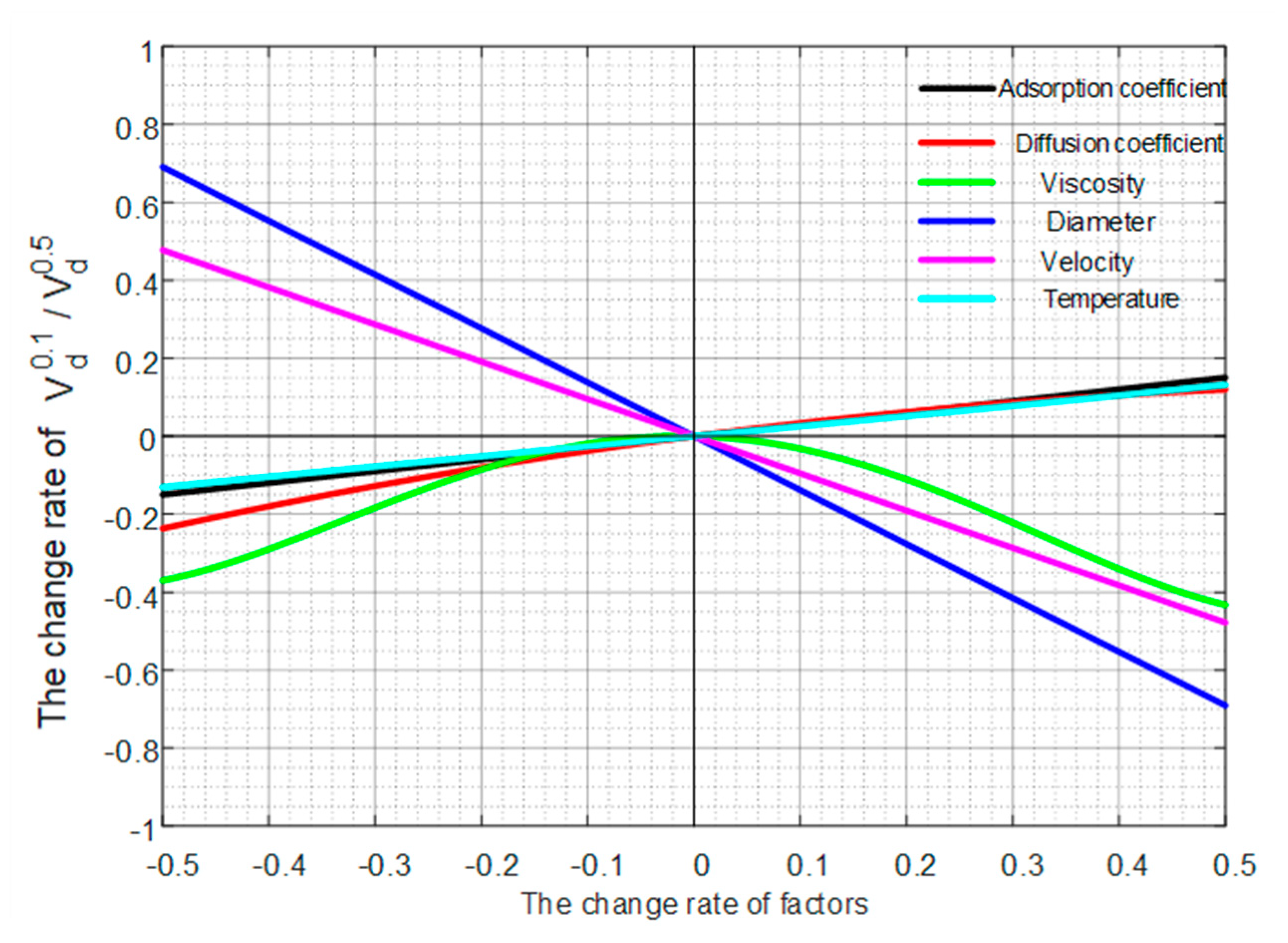
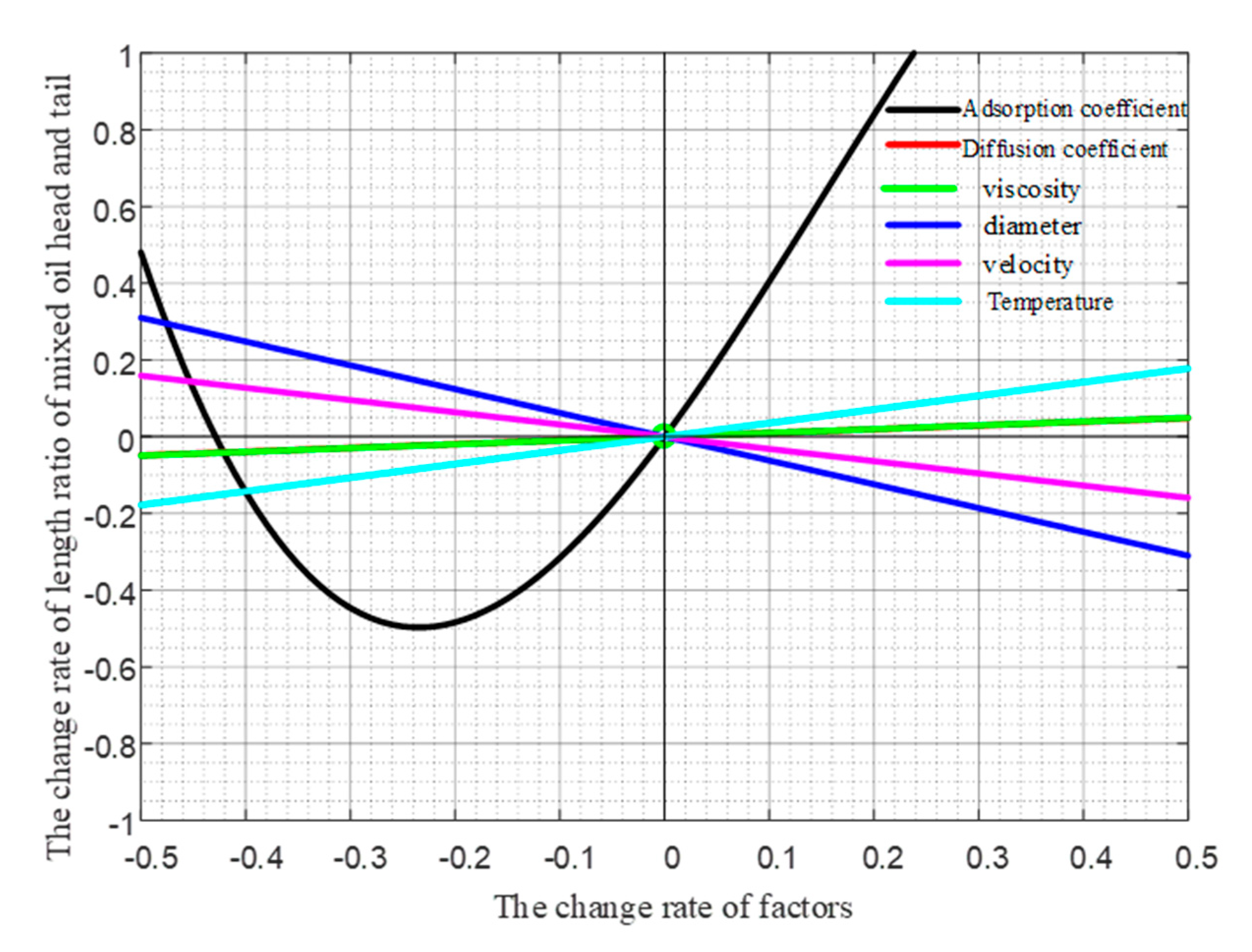
| Variety | Density (kg/m3) | Temperature Coefficient (kg/(m3·°C)) | |||
|---|---|---|---|---|---|
| 15.6 °C | 17 °C | 37.8 °C | |||
| Gasoline | 90# | 733.9 | 732.7 | 713.9 | 0.91 |
| 95# | 754.4 | 713.5 | 751.8 | 1.84 | |
| Diesel | 0# | 842.1 | 841.1 | 826.7 | 0.69 |
| Variety | Viscosity ( | Viscosity Temperature Index | |||
|---|---|---|---|---|---|
| 15.6 °C | 17 °C | 37.8 °C | (1/°C) | ||
| Gasoline | 90# | 0.594 | 0.587 | 0.489 | 0.00877 |
| 95# | 0.593 | 0.488 | 0.586 | 0.00876 | |
| Diesel | 0# | 6.081 | 5.867 | 3.452 | 0.02550 |
Publisher’s Note: MDPI stays neutral with regard to jurisdictional claims in published maps and institutional affiliations. |
© 2020 by the authors. Licensee MDPI, Basel, Switzerland. This article is an open access article distributed under the terms and conditions of the Creative Commons Attribution (CC BY) license (http://creativecommons.org/licenses/by/4.0/).
Share and Cite
Wang, Y.; Wang, B.; Liu, Y.; Liang, Y. Study on Asymmetry Concentration of Mixed Oil in Products Pipeline. Energies 2020, 13, 6398. https://doi.org/10.3390/en13236398
Wang Y, Wang B, Liu Y, Liang Y. Study on Asymmetry Concentration of Mixed Oil in Products Pipeline. Energies. 2020; 13(23):6398. https://doi.org/10.3390/en13236398
Chicago/Turabian StyleWang, Yi, Baoying Wang, Yang Liu, and Yongtu Liang. 2020. "Study on Asymmetry Concentration of Mixed Oil in Products Pipeline" Energies 13, no. 23: 6398. https://doi.org/10.3390/en13236398
APA StyleWang, Y., Wang, B., Liu, Y., & Liang, Y. (2020). Study on Asymmetry Concentration of Mixed Oil in Products Pipeline. Energies, 13(23), 6398. https://doi.org/10.3390/en13236398






